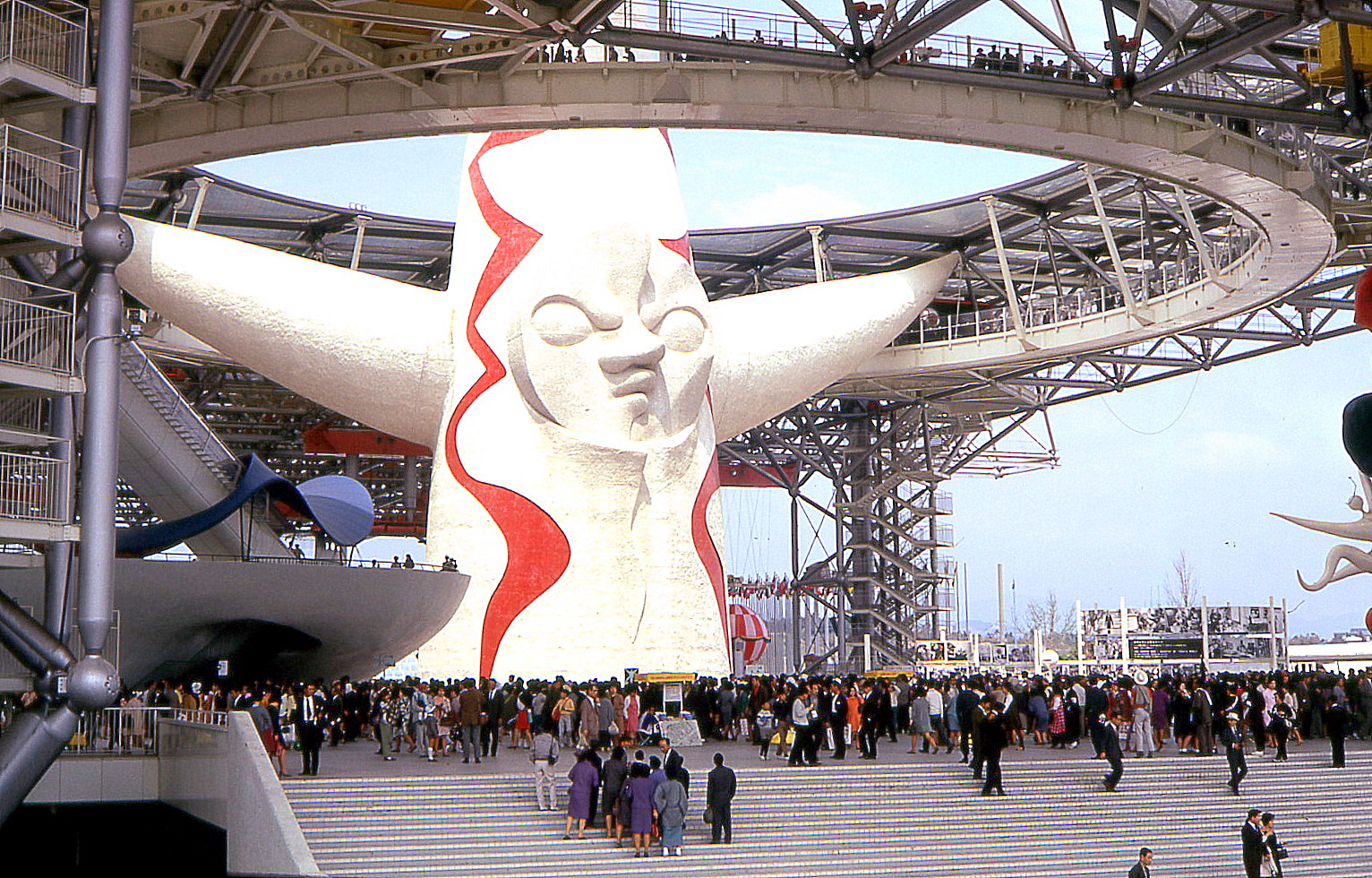
OSAMU SATO ON OSAKA EXPO ‘70
For seven months in 1970, Suita in Osaka Prefecture, Japan hosted the Expo ’70 world’s fair. Architects Kenzo Tange and Uzo Nishiyama oversaw the master plan for a 330 hectare site outside the city, setting out to design a social, international space that offered an auspicious vision of the future.
These ambitions culminated in the Symbol Zone, a colossal ‘space frame’ roof bringing together a selection of themed pavilions devised by Japanese architects, artists and designers. At its centre stood the Tower of the Sun, created by artist Tarō Okamoto; the 70 metre tall sculpture, adorned with three abstract faces, has become something of an icon of a bygone, hopeful moment in time.
Spread across the remainder of the site were pavilions financed by nations and business from around the world; an eclectic showcase of one-upmanship manifested through elaborate architectural facades with shades of early postmodernism in their bold iconography. Technological displays, representative of the gradual emergence of the communications society of the then-future, were front and centre. Moving walkways transported over 64 million visitors and performing robots entertained them. The US pavilion, which featured a piece of moon rock fresh from the Apollo 11 mission a year prior, supposedly attracted visitors at a rate of 8,000 an hour on the Expo’s first day.1
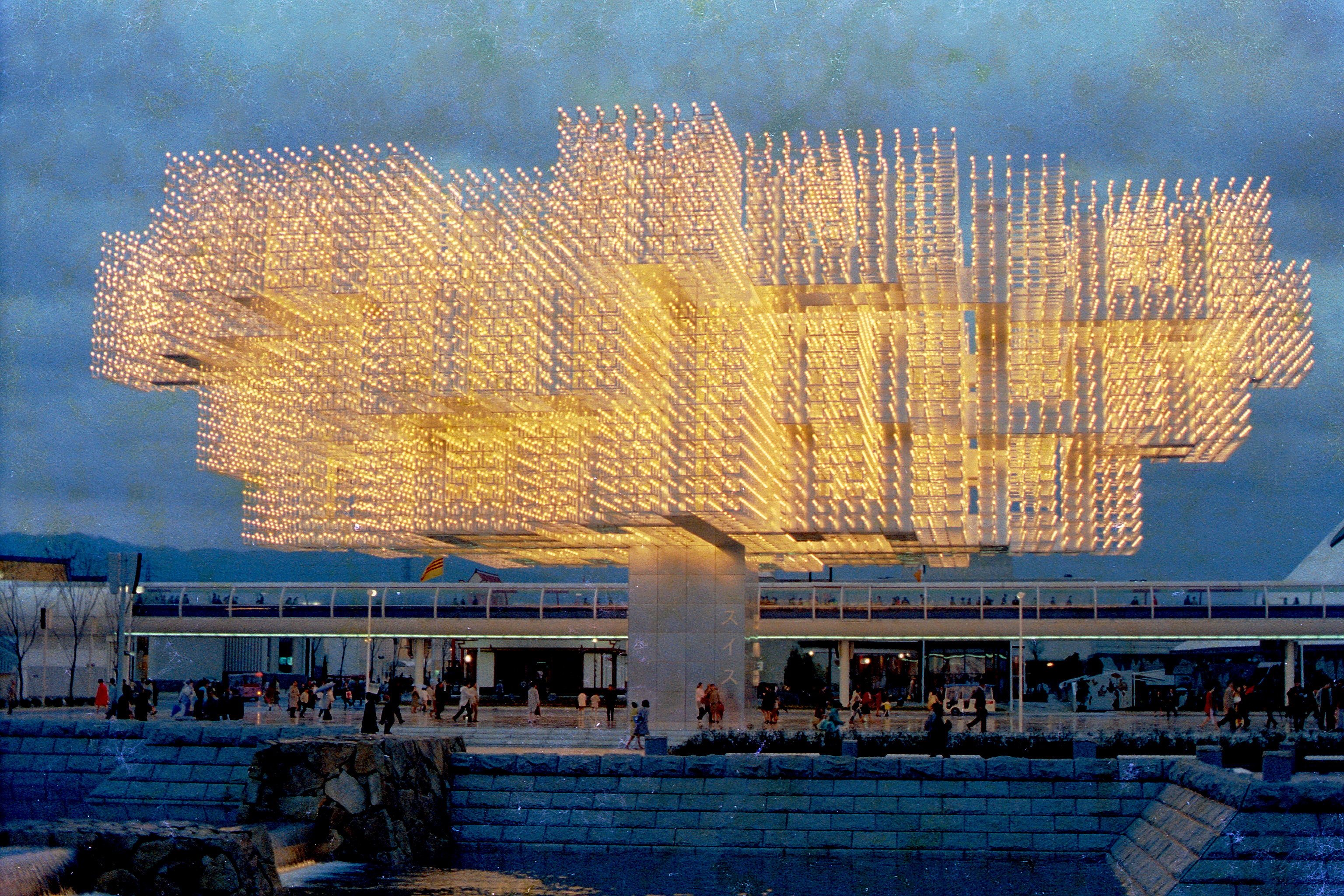

Willi Walter, Swiss Pavilion. Aerial view of EXPOLAND.
Perhaps overly optimistic in its embrace of fantasy, the Expo was decried by critics at the time as a nationalistic farce with an utter disregard for reality; arguably a criticism to be made of any world’s fair, but with symptoms exasperated by a strong emphasis on aesthetic abstractionism appropriated for purely commercial means.2
Yet, in a seemingly rare occurrence for an international event of its scale, the site of the Osaka fair continues to have an active physical presence to this day. The Expo park, now a vast green space encompassing gardens, museums and sporting venues, continues to be well maintained. Whilst many of the pavilions—including the ambitious Symbol Zone and its space framewere unceremoniously torn down, Tarō’s Tower of the Sun still stands, playing host to exhibitions and art installations as of 2018. Similarly, smaller public works such as fountains designed by sculptor and landscape designer Isamu Noguchi have long outlived the architectural features of other exposition parks the world over.
Expo ’70 lives, too, in the memories of those who visited. So well-defined is the fair’s affective legacy, that the recollections of attendees have informed studies on long-term memory.3 Of note is its lasting influence in cultural fields, particularly in the case of art, architecture, graphic and sound design. Expo ‘70 seemingly occurred in a formative moment for not only Japan’s cultural identity, but in the lives of many of its future innovators and creators.
Perhaps overly optimistic in its embrace of fantasy, the Expo was decried by critics at the time as a nationalistic farce with an utter disregard for reality; arguably a criticism to be made of any world’s fair, but with symptoms exasperated by a strong emphasis on aesthetic abstractionism appropriated for purely commercial means.2
Yet, in a seemingly rare occurrence for an international event of its scale, the site of the Osaka fair continues to have an active physical presence to this day. The Expo park, now a vast green space encompassing gardens, museums and sporting venues, continues to be well maintained. Whilst many of the pavilions—including the ambitious Symbol Zone and its space framewere unceremoniously torn down, Tarō’s Tower of the Sun still stands, playing host to exhibitions and art installations as of 2018. Similarly, smaller public works such as fountains designed by sculptor and landscape designer Isamu Noguchi have long outlived the architectural features of other exposition parks the world over.
Expo ’70 lives, too, in the memories of those who visited. So well-defined is the fair’s affective legacy, that the recollections of attendees have informed studies on long-term memory.3 Of note is its lasting influence in cultural fields, particularly in the case of art, architecture, graphic and sound design. Expo ‘70 seemingly occurred in a formative moment for not only Japan’s cultural identity, but in the lives of many of its future innovators and creators.
Yet, in a seemingly rare occurrence for an international event of its scale, the site of the Osaka fair continues to have an active physical presence to this day. The Expo park, now a vast green space encompassing gardens, museums and sporting venues, continues to be well maintained. Whilst many of the pavilions—including the ambitious Symbol Zone and its space framewere unceremoniously torn down, Tarō’s Tower of the Sun still stands, playing host to exhibitions and art installations as of 2018. Similarly, smaller public works such as fountains designed by sculptor and landscape designer Isamu Noguchi have long outlived the architectural features of other exposition parks the world over.
Expo ’70 lives, too, in the memories of those who visited. So well-defined is the fair’s affective legacy, that the recollections of attendees have informed studies on long-term memory.3 Of note is its lasting influence in cultural fields, particularly in the case of art, architecture, graphic and sound design. Expo ‘70 seemingly occurred in a formative moment for not only Japan’s cultural identity, but in the lives of many of its future innovators and creators.
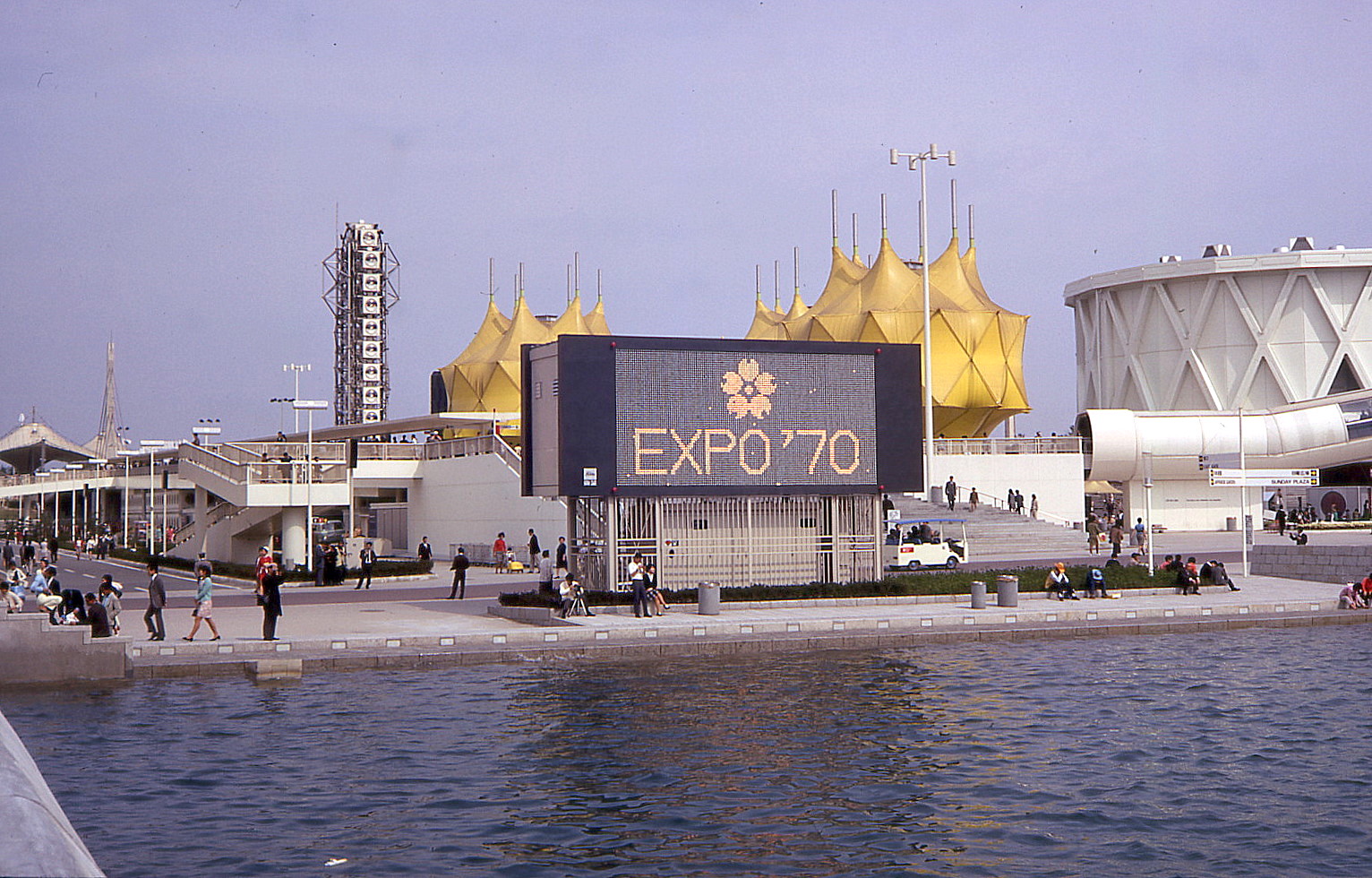
Osamu Sato, an artist, designer, photographer, musician and game designer from Kyoto, was born about an hour away from the site of the Expo park. His eclectic portfolio encompasses everything from early writing on computer graphic art, electronic music composition (including collaboration with the likes of Ryuichi Sakamoto), neon-soaked bondage photography and a number of gallery visual art shows.
Perhaps his most famous work amongst a Western audience is the cult favourite PlayStation title LSD: Dream Emulator (1998). A surrealist simulation exploring the creations of the sleeping mind, it is recognised as one of the earliest examples of a commercial game intended purely as an artwork.
Free of goals aside from raw experience, LSD presents a sequence of scenes to explore inspired by a dream diary kept by Hiroko Nishikawa, a copywriter working for Sato’s company Outside Directors (OSD). Pre-conceived environments are subject to randomised visual and audio variations so as to give each dream a unique ‘emotion’. The dreams are then placed on a continuing graph, logging whether they are an ‘Upper’ or ‘Downer’, ‘Static’ or ‘Dynamic’.
In its unpredictability, the game is able to perform on a scale ranging from sincere, absurdist humour to engendering feelings of genuine dread. As such, it has garnered an intense following of fans who closely study its unorthodox structure. In a continuation of this unconventional nature, two sequels came in the form of both a reimagining of the game’s soundtrack and a blend of plum liqueur brewed and bottled by Sato himself.
A young boy at the time, Sato made a total of ten visits to Expo ‘70. Fifty years on, we spoke to him about his experiences at the fair and asked him to give his take on a supposedly defining moment for the culture of 70s Japan.
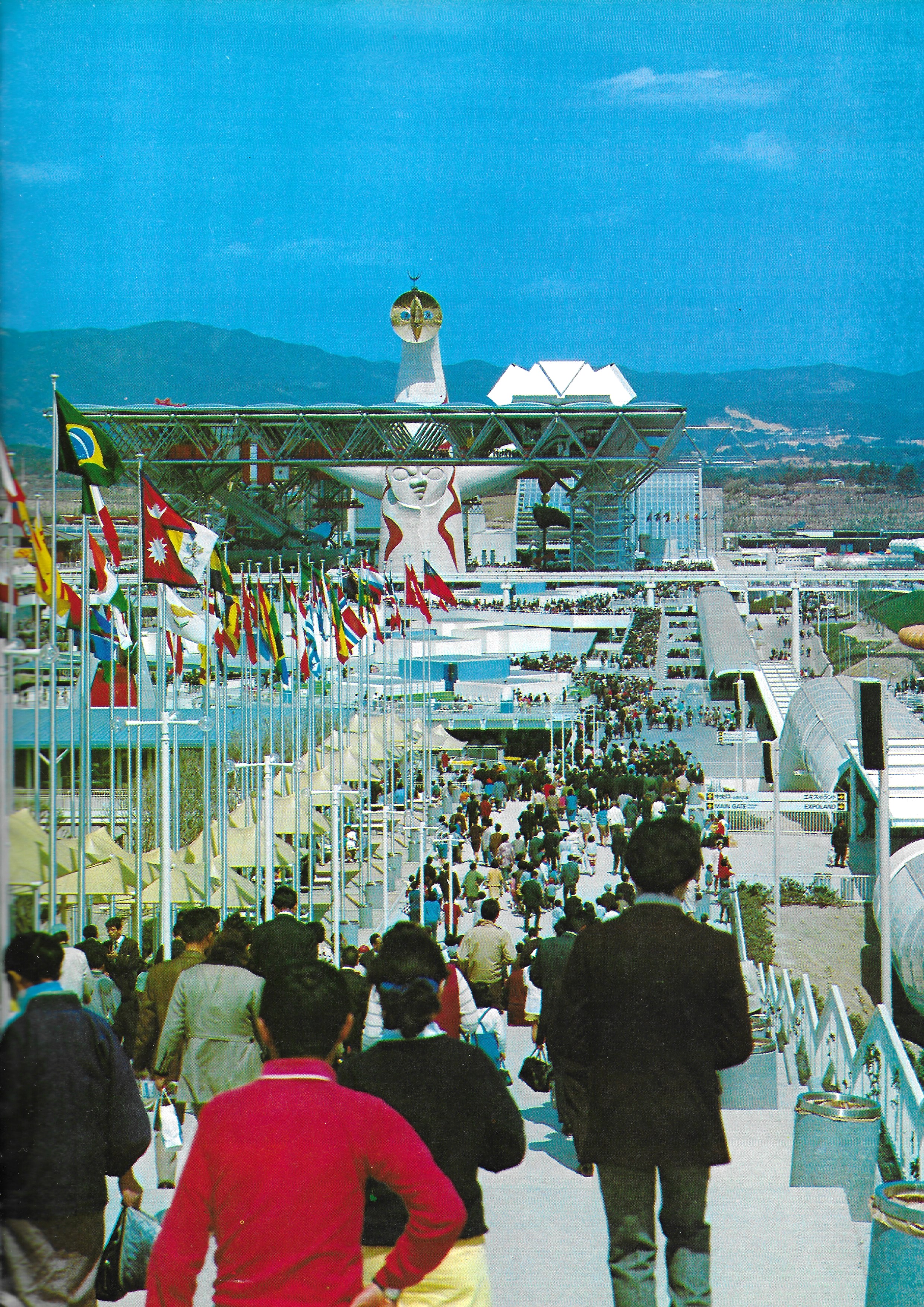
MEMORIES OF 1970
Osamu Sato:
I was ten years old back then and was a 4th year elementary school student. I liked baseball and played for the local team, practicing on Saturdays and Sundays.
The reason I visited ten times is because my father was working as a photographer for a newspaper. He’d go there frequently for his work and I accompanied him. As well as that, our place in Kyoto was fairly close to the Expo ‘70 site. My relatives would come to our place first as a common point before going there, so I used to tag along with them as well.
I think, in that moment, the world’s fair was people’s main interest. I also felt very excited every time I went there—it made the future seem expansive. That was also probably the first time I saw many different people with diverse physiques, hair colour, skin colour, eye colour, etc.
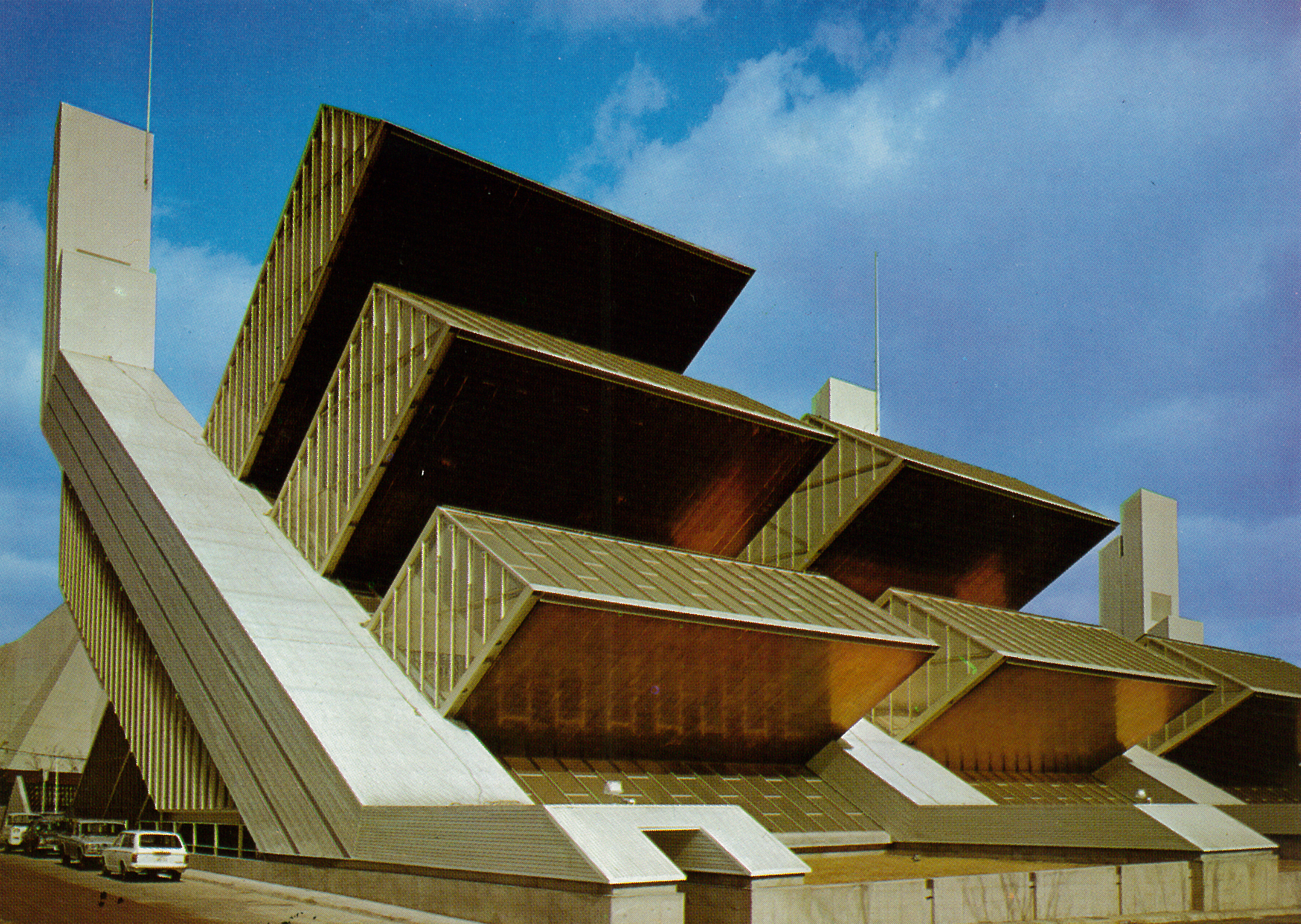

Tommaso & Gilberto Valle, Italian Government Pavilion. Kisho Kurokawa, Toshiba IHI Pavilion.
EXPERIENCING THE EXPO’S PAVILIONS
I stood in line at the US pavilion for about an hour. At that time, the Apollo landing had just been broadcast on TV so like many I had a fascination with space and the moon. But now that I think about it, it was just a big rock.
I don’t know if my visit had a direct effect on me creatively when I was 10 years old, but in a sense, I may have felt like I’d travelled the world. That might just be me looking retrospectively though.
There was an ample budget for the fair, so I think the creators and corporations were able to experiment. That which could not have been done without cooperation back then can probably be done individually now. Andy Warhol once said “in the future, everyone will be world-famous for 15 minutes”, but in the present day, you can remove the ’15 minutes’ from that phrase.
I don’t think the Expo itself was a ‘dystopia’ as critics of the day may have said. At present however, Japan, and perhaps the United States and the rest of the world, are approaching ‘dystopia’ like George Orwell’s 1984.
I remember the American, Japanese and Soviet Union’s pavilions having particularly noticeable designs. After all is said and done, however, it’s my opinion that the Tower of the Sun stood out more than anything else.
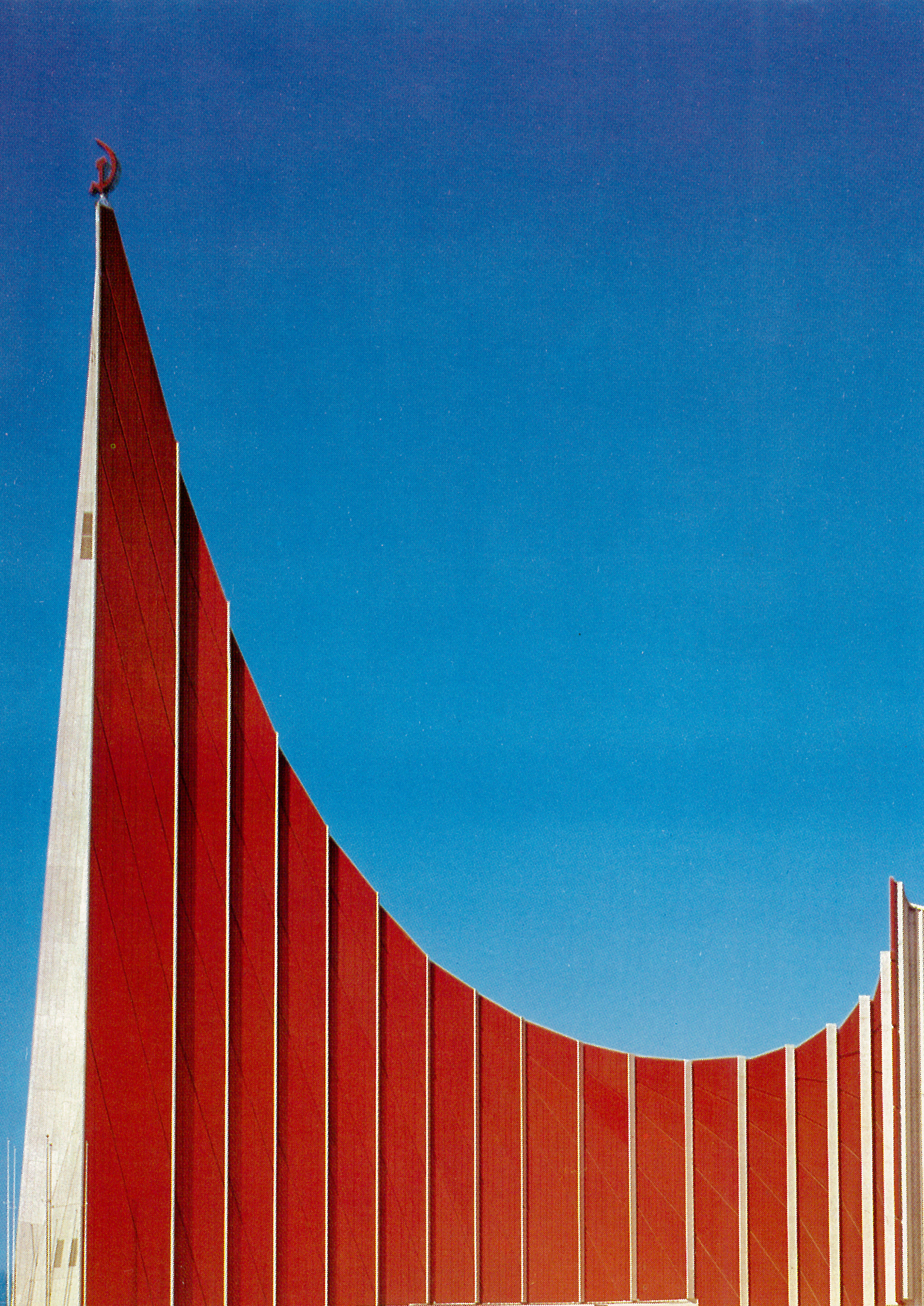
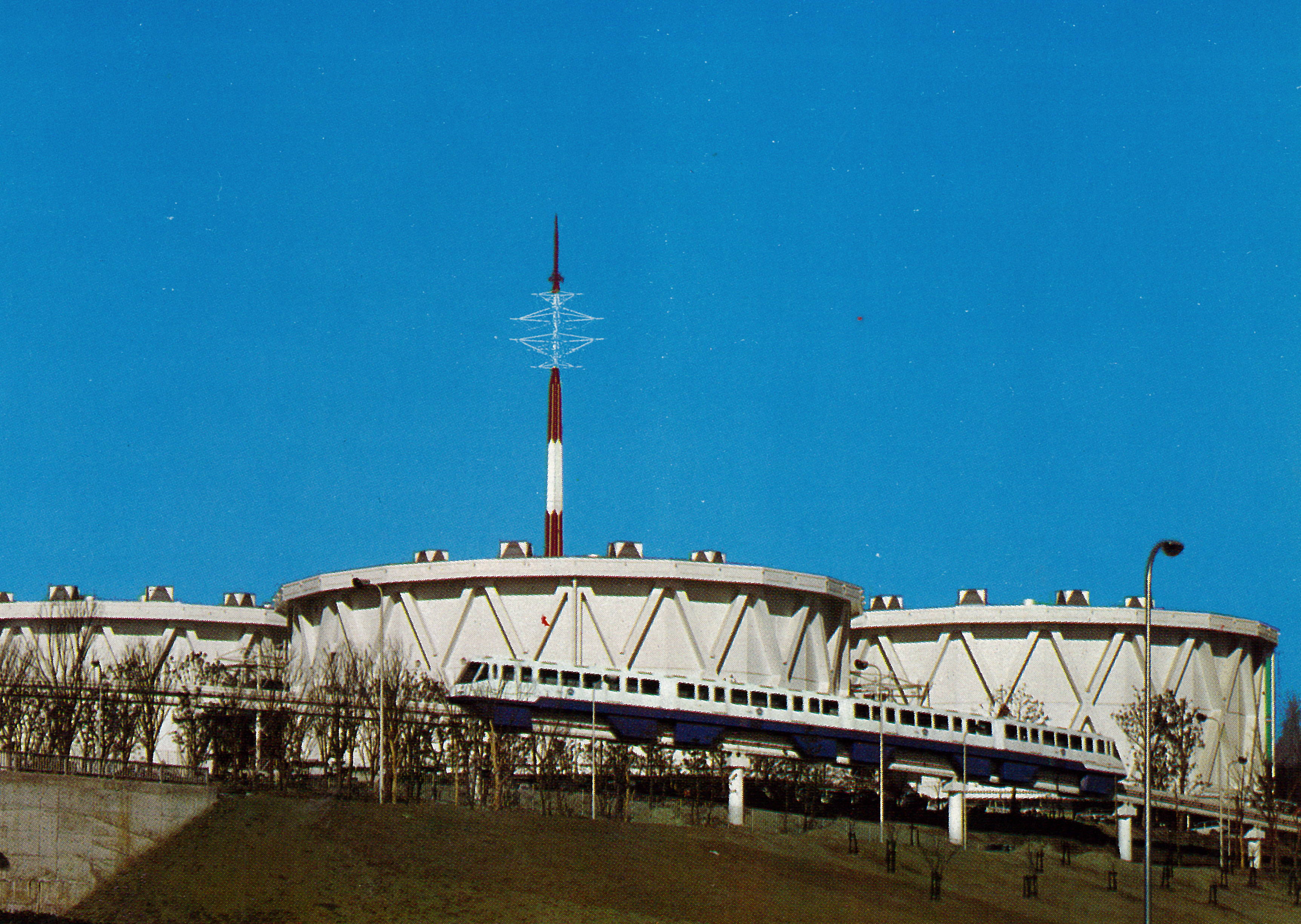
Mikhail V. Posokhin, Soviet Pavilion. Nikken Sekkei Komu Company Ltd., Japanese Government Pavilion.
TOWER OF THE SUN AND THE AESTHETIC OF EXPO ‘70
That tower had the most impact on me and I still remember it to this day. Whenever I create a character, the Tower of the Sun is always in the corner of my mind.
I don’t know much about all the pavilions, but the strange shapes of the buildings were certainly fun for me at as a child. Even then, I couldn’t believe they would all be destroyed afterwards. Fortunately, the Tower of the Sun is still there and I consider it one of Japan’s landmarks.
Regarding the Expo’s graphic design, I remember the cherry blossom mark [the Expo’s logo] clearly. I often drew it in the corner of my notebooks. The shape, created by combining circles, is mathematical and beautiful. Perhaps it influenced my current style, which uses circles in the same way.

Isamu Noguchi & Shoji Sadao, Expo ‘70 Fountain.
EXPO’S RETURN TO OSAKA IN 2025
Right now, many things have ground to a halt. The situation with the Tokyo Olympics has become quite dire. I think I could see the 2025 Expo being postponed as well.
If I’m interested at the time I might visit, but I can’t really say for sure. To be honest, I’m not that interested at the moment!
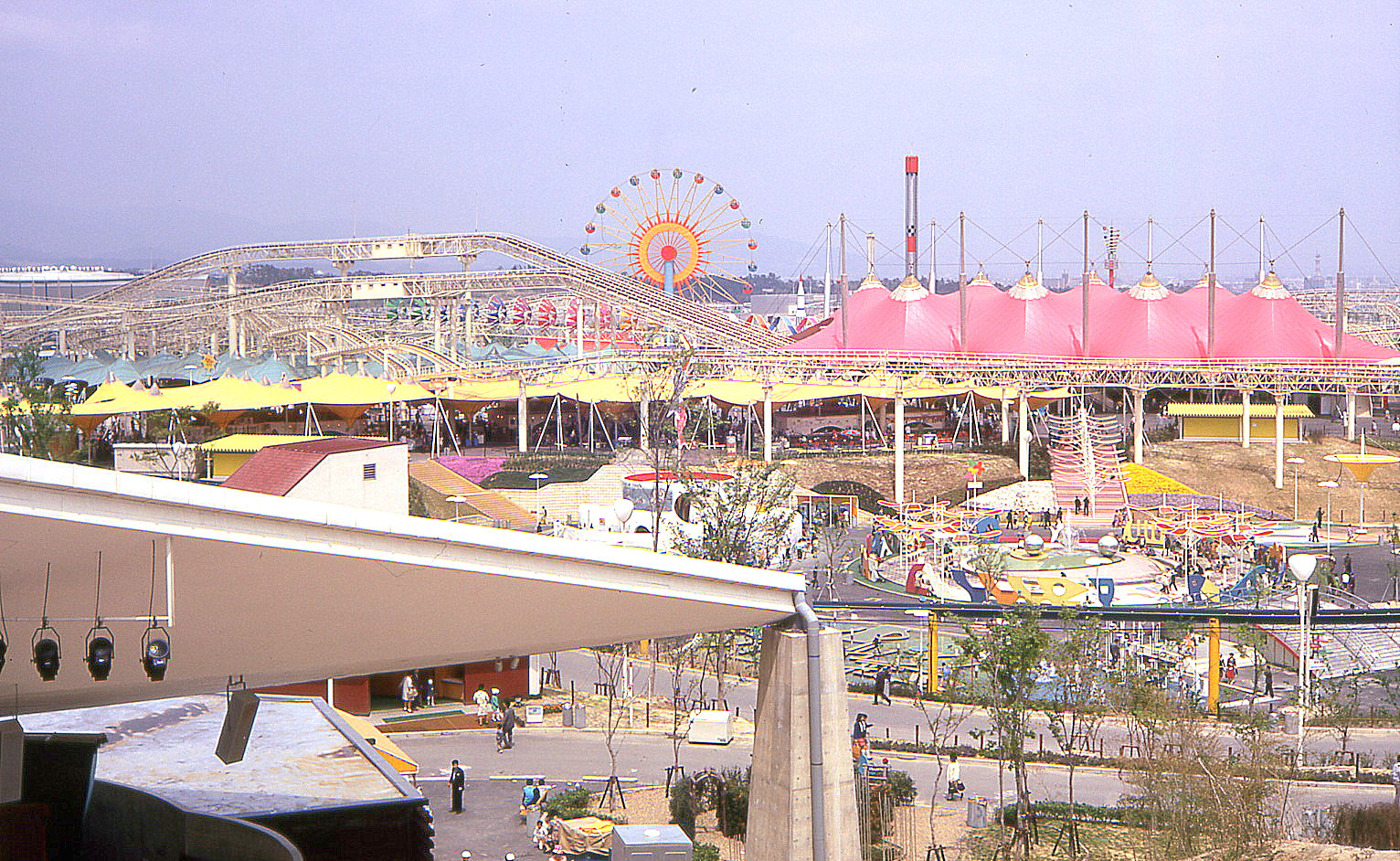
1 Philip Shabecoff (1970) Moon Rock Fascinates Osaka Crowd in The New York Times (March 16, 1970), 14 https://www.nytimes.com/1970/03/16/archives/moon-rock-fascinates-osaka-crowd.html
2 Reiko Tomii (2007) Art, Anti-art, Non-art: Experimentations in the Public Sphere in Postwar Japan, 1950-1970, 28
3 Hiroyuki Shimizu and David Anderson (2007) Recollections of Expo 70: Visitors’ Experiences and the Retention of Vivid Long-Term Memories http://blogs.ubc.ca/ewayne/files/2010/02/Anderson-Shimizu-2007-Recollections.pdf